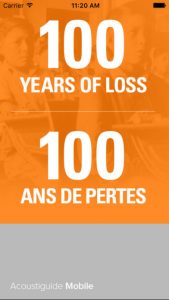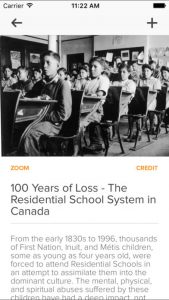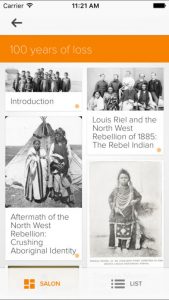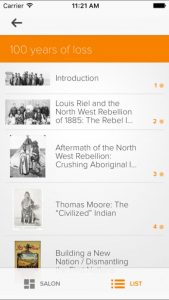Weblog Module #1:
As Katie mentions in her post, I too am interested in digital story telling that is created by indigenous peoples to share with neighbouring communities. For now, I’m extremely intrigued with the N’we Jinan artists who record their own music to share with districts across BC. Hare discusses how connected Aboriginal people are to their land and surroundings when he says, “Indigenous knowledge is intimately connected to land, where meaning and identity are constructed through landscapes, territory, and relationships with the natural world” (Hare, 2011, p.92). For myself, I cannot help but notice how connected I am to my devices and cannot imagine going hours, days, or weeks without my phone. I often find myself so focused on the 6-inch screen in front of me; rather than what is around me. The resources below are a starting point for me to attempt to unearth the connection between literacy and digital media. This is where I will look at lyrics from the N’we Jinan YouTube channel and connect it to independent films created by Aboriginal Actors/producers. Again, this is only the first module, so my focus may change as we begin to explore other topics.
The Burnaby School District (SD41) Aboriginal Program provides relevant programming and services to students of Aboriginal ancestry. The program is in congruence with the Aboriginal Enhancement Agreement. The agreement is built on the foundation of mutual respect, understanding and ownership over the success of our students of Aboriginal ancestry. The Agreement has 3 main goals:
- To increase Aboriginal learners’ connection to school and community that supports and reflects Aboriginal cultural values and perspectives
- To increase the knowledge and understanding of Aboriginal history, traditions and cultures for all learners
- To enhance academic achievement of all Aboriginal learners within the Burnaby School District
This pdf document outlines goals that enhances academic achievement of all Aboriginal learners within the Burnaby School District. The motto of this document is called “Strong Together,” and I believe that this agreement is a true reflection of how the community wishes education to progress in Burnaby, so that students of Aboriginal ancestry have the opportunity to maximize their full potential.
This is Burnaby District’s Aboriginal Education website for students, parents and educators in our district. The website provides updates, resources for new teachers and scholarship opportunities for our students. What I like most about this resource is the section on reconciliation and residential schools. Teachers are encouraged to use the PDF documents, video series, and an introduction to “100 Years of Loss App.” These resources have allowed me to bring up the topic of residential schools with my students, as we read through stories and begin to understand how difficult it was for families to recover from the trauma sustained while attending these schools.
Dr. Robert Joseph came and presented at our district Pro-D-Day last year and let me tell you, there wasn’t a dry eye in the room. Attached is a glimpse of how the Truth and Reconciliation was created to allow First Nations people to share their truths, as a mend to help heal from the racism and intolerance experienced by them. Dr. Joseph is the Hereditary Chief of the Gwawaenuk First Nation’s group, who has dedicated his life to bridging the differences brought about by intolerance, lack of understanding and racism in Canada. At the end of his speech to us, he said, “Let us find a way to belong to this time and place together. Our future, and well-being of all our children rests with the kind of relationships we build today. We are one.” To book Dr. Joseph for a professional development opportunity, click here: BOOK NOW
- We Are Medicine – N’we Jinan Artists
(I didn’t know that Danielle posted about this group too, so I’ll leave this up as a connection to hers)
As I was working through the readings in Module 1, one of the biggest topics that I came across is how stories are being told and how technology is being used to share these stories. I immediately thought of a family I met last year at the inner-city school I taught at. During breakfast club last year, there was one family that had just moved from Bella Coola, BC. The eldest girl in the family was in my Grade 6 class, and for her “get to know me” project, she introduced a video that her cousins and her made the past summer in Bella Coola. The music video “We are Medicine,” talks about the Nuxalk youth of Bella Coola, who have big dreams and hopes for their future. They are faced with many daily struggles, such as low income, addiction, and some learning difficulties. But, the best way to heal is through people. Their way of storytelling is through music. The song, “We are Medicine” shows their faith, their choices, their hearts and their character as the medicine that allows them to heal. This music video does an amazing job on addressing stereotypes and labels that have been attached to these youth, and how these youths are overcoming their challenging circumstances. Their voices are heard and their stories are now being shared across our district. For more videos on the N’we Jinan, please visit their Youtube channel: https://www.youtube.com/channel/UC3cGlc6u–We2a6TTi2gK5Q and their website: http://nwejinan.com/
Since this is a technology class, I thought it would be fitting to explore the free app created by Tristan Interactive. The developer “Acoustiguide Interactive” takes a personalized approach to immerse and redefine the way people visit museums, art galleries, parks and cities. This app explores the lives of Aboriginal families starting from the mid 1800s and continuing until the mid 1990s. As a non-Indigenous person educating in BC’s school system, I must feel comfortable to incorporate Aboriginal studies into my curriculum. Since I’m quite nervous to teach about this material, I must get the facts straight, so what better way than to utilize our iPads and this wonderful resource. The app shows a timeline of major events throughout Canada. My students like that the content is simplified and presented in a different way than a textbook.
6. AbEd Opportunities in September/October
Our AbEd teacher at our school sent teachers the memo below to address Orange Shirt Day which is coming up on September 30th.
“September 30th has been declared Orange Shirt Day annually, in recognition of the harm the residential school system did to children’s sense of self-esteem and wellbeing, and as an affirmation of our commitment to ensure that everyone around us matters. As September 30 falls on a weekend this year, we hope you can choose a day near the 30th to honour this within your school community.”
Here is the official link for this event: CLICK ME
Additionally, UBC has some amazing workshops that are being offered on October 17th and October 21st. See below:
The PDCE office at the UBC Faculty of Education is proud to be offering two online MOOCs this fall:
- Reconciliation Through Indigenous Education (100% free to audit, $50 for a verified certificate)
- Next offering: October 17, 2017
- See the Poster
- Bringing Mental Health to Schools ($20 registration fee)
- Launches October 31, 2017
- See the Poster
A MOOC is a Massive Open Online Course. Our MOOCs are modular, self-paced and non-credit online courses offered by the University of British Columbia, and delivered on the edX platform.
Please share the information about these MOOCs (below) with your colleagues at Burnaby Youth HUB and Take a Hike Secondary Program, or with anyone else whom you feel would benefit and may find them of interest. We are excited to be offering these courses, and to be sharing them with you!
For more information, please visit pdce.educ.ubc.ca/MOOC.
Resource:
Hare, J. (2011) Learning from Indigenous knowledge in education. In D. Long and O. P. Dickenson (Eds.), Visions of the heart, 3rd Edition (pp. 91-112). Toronto, ON; Oxford University Press.



